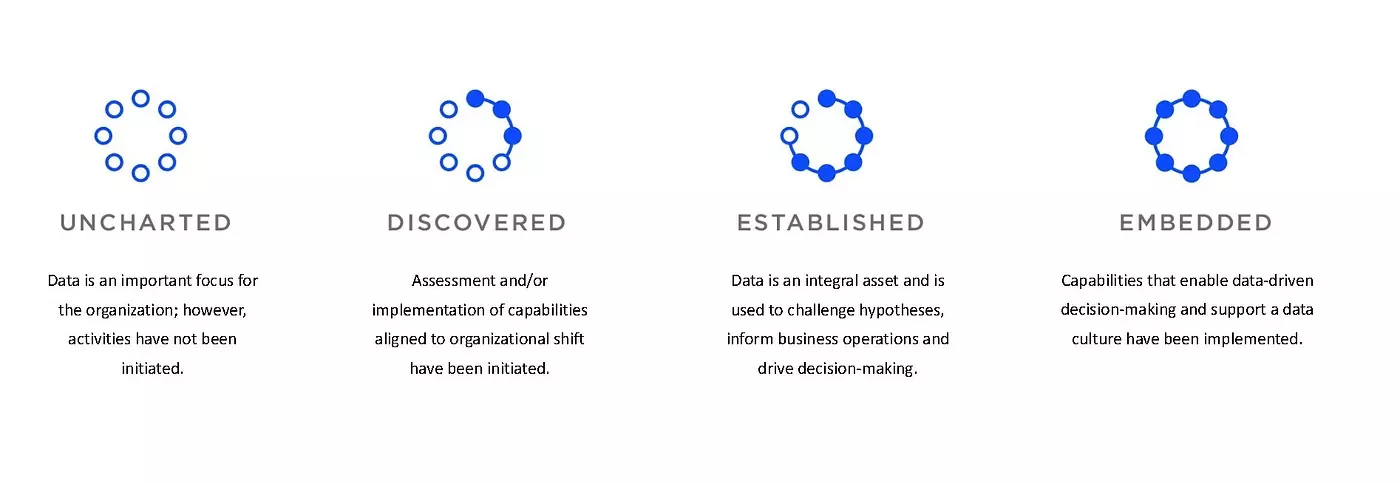Hidden value in data for nonprofits

When data is used effectively, it can transform a nonprofit organization—accelerating progress toward achieving (and even exceeding) its mission and helping it avoid unnecessary risks. Most of the time, you can work magic with the data that already exists in your organization.
Rich insights can be drawn by pulling together and analyzing existing data you’ve already captured about those you’re serving, donors, volunteers, programs, and outcomes. Research indicates that insights-driven businesses are growing at an average of more than 30% each year. Making your data useful translates to more effective programs, higher revenues, more efficient internal operations, better volunteer management, better data-driven strategic decisions, and more impactful stories.
The opportunity to tap into the value of data is well known. A recent study revealed that 90% of nonprofits collect data; however, only 40% of nonprofit professionals use data to make decisions and only 6% of respondents said they felt they were effectively using the available data at their disposal.
Building an organization where teams, especially front-line workers—case managers, volunteer coordinators, fundraising officers—are empowered with data to make informed decisions may seem overwhelming to nonprofit leaders. Many share a common misconception that the process will involve costly technology changes with low adoption rates. Research shows, however, that the key to effective change isn’t necessarily cost-prohibitive technology investments. While the path to becoming a more data-centric nonprofit will look different for every organization, the easiest place to start successfully improving how data is used across your organization is by building a “modern culture of data.”
A modern culture of data is a culture of experimentation and curiosity, where employees at all levels are empowered to use data effectively. It is an organizational mindset that encourages teams to use data in all their decision-making, helps them understand the value it brings, and incentivizes them to put that understanding into practice. Your nonprofit can have all the latest tech, perfectly designed processes, and the very best of intentions but if you don’t have the right culture, you cannot fully unlock the power of your data.
Implementing a data culture
A successful shift in how your organization uses data begins with a clear understanding of the why. Your teams really need to know why they should make the shift in how they think and operate. To help articulate the reason behind this change, leadership must work with their teams to formulate clear strategies and objectives and key results (OKRs) specifically aimed at advancing their organization’s mission. Those working or volunteering at your nonprofit are there because they believe in your mission; they want to be part of making a difference and effecting change.
A clear understanding of what you are trying to achieve and why it is important to your nonprofit’s mission keeps everyone aligned as you work together to make it happen. Common strategies and objectives also help to lay out how your teams will be enabled to achieve them. This understanding sets the groundwork for the acceptance and adoption of a cultural shift, new technologies, and new ways of working. It makes it plain to the whole organization how using the right data can help teams realize and achieve the goals leaders have set.
Creating a modern culture of data necessitates the involvement of nonprofit leaders at all levels, from the top down, sponsoring these key areas:
- Data strategies: How to integrate data into ways of working across the organization to support your strategies and OKRs, and reinforce the modern culture of data.
- Data management: The tools and practices that allow people to know what data exists and to engage with that data at the appropriate access level while ensuring compliance with the right data governance, ethics, privacy, and security policies.
- Data literacy: Investing in education on how to best use data to uncover insights, ask the right questions, think critically, and challenge conclusions based on data and experimentation. Leaders help shape the culture and must be involved in managing the shift to becoming a data-driven organization.
Reaching that next level of maturity
After establishing the why and how, you should assess where your nonprofit is on your data journey to help focus your effort in making the culture shift. Based on our experience working with clients across various industries, we have categorized an organization’s data culture into four levels of maturity, shown below.

Moving your organization to the next level of maturity does not have to be an overwhelming undertaking. Just start with one type of data and take an iterative approach to changing how it is used across your organization.
The first step is to evaluate the data’s access and transparency—how is the data captured and validated? How is the data integrated (if at all) with your internal systems? What are the barriers to access? Is it user-friendly?
Next, consider your data governance—what are the guidelines for security, privacy, compliance? Are there policies and training in place to maintain guardianship? Is ownership clearly defined?
Then assess your organization’s level of data literacy: Does data literacy only exist with one or two SMEs? Are there dashboards or interactive charts providing real-time or near-real-time data? Is data being used to proactively make decisions or reactively to validate decisions? What ongoing training is in place to grow the depth of knowledge? Are there opportunities to use machine learning and embedded analytics to aid decision-making?
When the United Way wanted to show the impact it was making during COVID, the data needed to tell this story was living in different places, including Microsoft Forms, Excel, and Access database. By centralizing the data in the cloud, it became easily accessible to pull into dashboards, that live on their website. According to Dr. Darienne Hudson, United Way’s CEO, “the dashboard Slalom created helps us better visualize and communicate the needs that remain across the community. It also provides clarity, as we message our response and impact in front of various audiences.” Being able to visually see the data allowed them to make meaning out of the data and share it in a transparent way. Data accessibility and literacy enabled their teams to quickly identify potential gaps and where they needed help removing barriers to drive equity across the communities served.
Remember to continually keep the human aspect in mind when building a culture around using data to make informed decisions. When your team successfully improves how one type of data is used across the organization, the lessons gleaned and benefits experienced will be powerful motivators to move your nonprofit to the next level of maturity.
Becoming more data-driven and reaching the next level of maturity is a journey; it is not something that happens overnight. But the more ways you can unlock the power of your data and analytics, the more you will be able to use your resources effectively, avoid unnecessary risk, and better serve your community.
This blog post is part of a knowledge series from Slalom, providing practical insights and provocative perspectives on strategies that enable nonprofits to be innovative. We’ll also discuss the value of innovation in the nonprofit sector, with its challenges and opportunities, and a set of unique recommendations.
Meet the authors:
Cari Lim is a seasoned client partner who collaborates closely with clients to identify their needs and develop business solutions that generate long-term sustainable revenue growth. With a proven track record, she has led multimillion-dollar integrated marketing and fundraising campaigns for numerous nonprofit organizations across North America. Cari co-leads Slalom’s Nonprofit Community of Practice and is committed to empowering nonprofits to increase their impact by leveraging data and technology.
Steven Borowski is an accomplished global innovation and operations expert, adept at developing innovative strategies for mission-based organizations. He is highly skilled in successfully launching new products with tangible business value and specializes in building collaborative partnerships with C-level stakeholders to drive organizational transformation aimed at improving overall effectiveness. Steven is a consummate volunteer and board member and has an in-depth understanding of the unique characteristics of nonprofits. He co-leads Slalom’s Chicago Nonprofit Sector.


